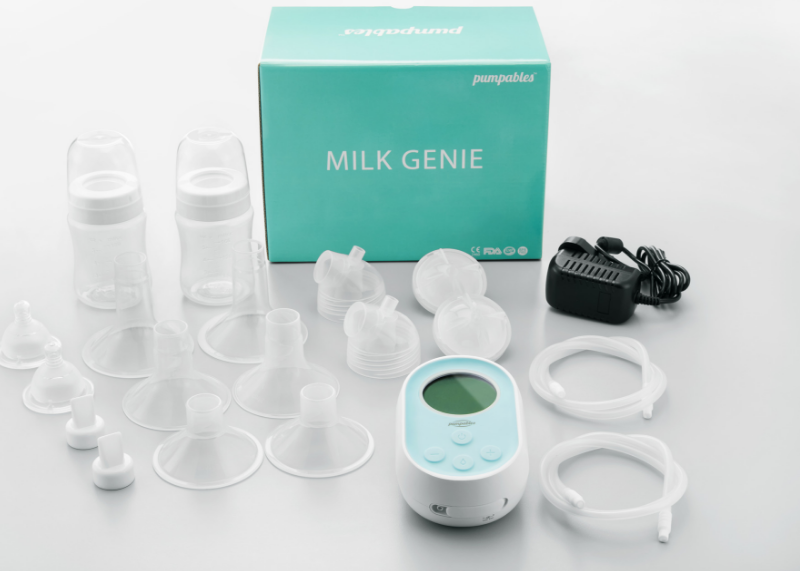The most common cause for a decrease in milk supply while pumping are worn out parts. Worn out pump parts decrease the performance of the pump and also make the pump work harder, putting unnecessary stress on the motor contributing to a shortened overall lifespan of the pump. Check out our simple guide below for how often parts of the milk collection kit should be replaced. If you are noticing a negative change in milk supply or performance of the pump, be sure to check and see if a part needs replacing.
Replace valves or Liquid Inserts between 2 weeks and 3 months
If you exclusively express or you express 4 or more times per day, be sure to replace your duck valves or Liquid Inserts every 2 weeks. If you use your pump less frequently, e.g. 1 to 3 times per day, you can replace this part every 2 to 3 months. Also, if you sterilise regularly (e.g. once per day), you may need to replace this part more often depending on use. Frequent sterilisation causes parts to wear out faster than they would under normal circumstances, so it’s important to check periodically for a decrease in elasticity or warping of this part.
https://pumpables.co/products/liquid-insert
Replace valve membranes between 2 weeks and 8 weeks
If you exclusively express or you express 4 or more times per day, be sure to replace your valve membrane every 2 to 4 weeks. If you express less frequently, replace valve membranes every 8 weeks. Valve membranes wear down easily and lose elasticity over time, which impacts pump performance and milk output. Replacing the membrane on a valve solves a lot of output and performance issues. The membranes can even become warped, so if you see that they don’t lay at against the valve anymore, it’s time to replace them. Also, if you sterilise regularly (e.g. once per day), you’ll need to replace this part every 2 weeks or more often depending on use.
Replace backflow protector diaphragms between 1 and 4 months
The diaphragms within the backflow protectors stretch and lose elasticity over time, which impacts the performance of the pump. It is extremely important to replace the diaphragms regularly because they prevent moisture from entering the pump motor, which can cause irreparable damage to the pump. If you exclusively express or you express 4 or more times per day, be sure to replace
your diaphragms every month. If you use your pump less frequently, e.g. 1 to 3 times per day, you can replace this part every 3-4 months. Additionally, always replace these as soon as you see any tearing or rippling in the diaphragm. Also, if you sterilise regularly (e.g. once per day), you may need to replace this part more often depending on use, so always be sure to check for warping or discoloration of the diaphragm.
Replace breastshields or Shield Assembly every 6 months
The most rigorous cleaning routines are no match for the inevitable buildup of residue in the hard to reach areas of the breastshield. If you’re exclusively pumping or pumping 4 or more times per day, a good rule of thumb is to replace breastshields (or the piece that connects the flange to the bottle, if you’re using a 2 piece breastshield) every 6 months. If you pump less frequently, be sure to check
regularly for residue buildup and then replace as needed. Frequent sterilisation can also cause discoloration of the breastshield; this does not impact performance, but always inspect it for warping or cracking prior to use.
Replace tubing if there is moisture or residue in the tubing
The backflow protector should prevent moisture from entering the tubing; however, should moisture or buildup ever enter the tubing, it needs to be replaced. There’s no way to effectively clean and sterilise the tubing and moisture can cause irreparable damage to the pump motor or compromise its safety (think: mold and bacteria).
How do I dispose of old pump parts?
We’ve discussed replacing parts, but what do you do with the old parts after they’ve replaced? Your breast pump comes with many parts and accessories. We’ve outline what to do with each of them when they’ve reached the end of their lives:
Duck valves can be disposed of in your regular trash. They cannot be recycled.
Liquid Inserts may be recycled in some areas but you will need to check your local guidelines.
Backflow protectors: the exterior clear hard plastic parts can be recycled in your regular recycle bin, and the interior silicone diaphragm must be thrown away.
Valve membranes can be disposed of in your regular trash. They cannot be recycled.
Valves can be recycled in your regular recycle bin.
Breastshields, flanges, and connectors can be recycled in your regular recycle bin.
Tubing needs to be thrown away in your regular trash. It cannot be recycled.
Bottles, bottle necks, caps, and sealing discs can be recycled. Teats cannot be recycled and will need to be thrown away in your regular trash.
Breast pumps need to be taken or sent to an electronics or PC recycling company. Contact your local authorities to find an authorised PC recycle centre near you.


